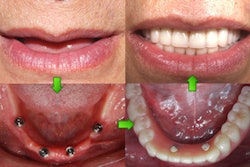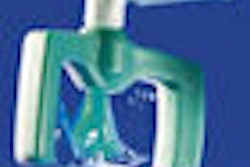Chlorhexidine does not negatively affect the immediate bond strength of most cements used on fiber-reinforced posts, according to a study conducted at the University of Helsinki and published in the Journal of Dentistry (July 2, 2010).
Chlorhexidine is used as final irrigant before endodontic obturation, and fiber-reinforced composite posts are recommended for restoration retention, the study researchers noted. "Our aim was to evaluate the effect of chlorhexidine on adhesion of cements used in post cementation."
Four commercially available fiber-reinforced posts (Glassix, Nordin Dental; D.T.Light-Post, Bisco Dental Products; Unicore, Ultradent Products; and everStickPost, Stick Bond Dental) with three cements (Duo-link with All-bond 2, Bisco; PermaFlo DC with PermaFlo DC primers, Ultradent; and RelyX Unicem, 3M ESPE) were used. Root canals of 80 human extracted third molars were prepared for post cementation with each post systems' own burs.
After etching (except with self-etching RelyX Unicem), the post spaces were irrigated either with 2% chlorhexidine or physiological saline for 60s. With RelyX Unicem, respective treatments were done before cement application. The roots (n = 5 per group) were cut into 2-mm-thick dentin disks. The bond strength was measured with the push-out method, and the failure mode was evaluated with a stereomicroscope.
The researchers observed significant differences in bond strength between various post/cement combinations. Unicore/PermaFlo DC and everStickPost/RelyX Unicem showed significantly higher bond strengths than Glassix or D.T.Light-Post with Duolink both with saline and chlorhexidine.
Chlorhexidine improved the bond strength slightly with all posts/cements except D.T.Light-Post, but the differences were not statistically significant. With chlorhexidine, significant reduction of adhesive failures toward dentin cohesive or mixed failures was observed with all posts/cements except everStickPost.
The use of chlorhexidine did not negatively affect the push-out bond strength in post bond cementation, the researchers concluded.
Copyright © 2010 DrBicuspid.com



















